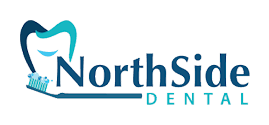Teeth Whitening
Want a brighter smile? When it comes to tooth-whitening, you’ve got two options: in-office-based teeth bleaching, or at-home care.
Both tooth-whitening options use peroxide-based bleaching agents. At-home systems contain from 3% to 20% peroxide (carbamide or hydrogen peroxides). In-office systems contain from 15% to 43% peroxide.
Generally, the longer you keep a stronger solution on your teeth, the whiter your teeth become. However, the higher the percentage of peroxide in the whitening solution, the shorter it should be applied to the teeth. Keeping the gel on longer will dehydrate the tooth and increase tooth sensitivity.
There are pros and cons to each option, but before you try at-home tooth-bleaching kits, be sure to talk to your dentist. Not everyone will see good results. Bleaching will not whiten porcelain crowns or composite tooth-colored bondings.
Teeth whitening done by your dentist can get teeth brighter faster. The bleaching solution is usually much stronger than at-home kits. Also, heat, light, or a combination of the two may be used to speed and intensify the whitening process.
The most dramatic results — teeth generally get three to eight shades brighter — usually take several 30- to 60-minute in-office visits. Some dentists use techniques that can be done in a single 2-hour appointment (e.g. the Zoom system).
There are many choices for bleaching teeth at home, the most common include:
Tooth whitening strips and gels. Applied directly to the teeth with a brush or a thin strip, these peroxide-based tooth bleaching products usually need to be applied once or twice a day for 10 to 14 days.
Tray-based tooth bleaching systems. With this teeth whitening option, a mouth guard-like tray is filled with a peroxide-based bleaching gel or paste and placed over the teeth for one to several hours a day for up to four weeks. You can buy tray-based tooth whitening systems over-the-counter or have one custom-fitted by your dentist.
Tooth whitening toothpastes. Because they’re mildly abrasive, every toothpaste helps remove stains from teeth. Whitening toothpastes, however, also contain chemicals or polishing agents that help scrub stains from teeth without the aid of a bleaching agent. Tooth-whitening toothpastes are relatively inexpensive and brighten teeth by about one shade. Some whitening toothpastes contain peroxides, but they aren’t left on the teeth long enough to have a whitening benefit.
Whether you use an at-home tooth-whitening system, or have your teeth bleached by a dentist, you can help maintain the results by brushing, flossing, and rinsing daily. Also, avoid acidic and tannin-rich foods and beverages such as:
- Black teas and coffee
- White and red wine
- Sports drinks
- Carbonated beverages (dark and light-colored sodas)
- Berries and other strongly-colored foods
- Sauces (soy, tomato, curries)
SOURCES:
American Dental Association: “Tooth Whitening.”
British Society for Oral Medicine: “Oral Hygiene.”
Harvard Medical School: “Tooth-Bleaching: Better Left Up to a Dentist.”
Kimberly Herrig, registered dental hygienist, Los Angeles, Calif.
National Institutes of Health: “Discoloration Of Dental Pellicle By Tannic Acid.”
National Institutes of Health: “Iron Staining Of The Acquired Enamel Pellicle After Exposure To Tannic Acid Or Chlorhexidine: Preliminary Report.”
Adopted from WebMD








